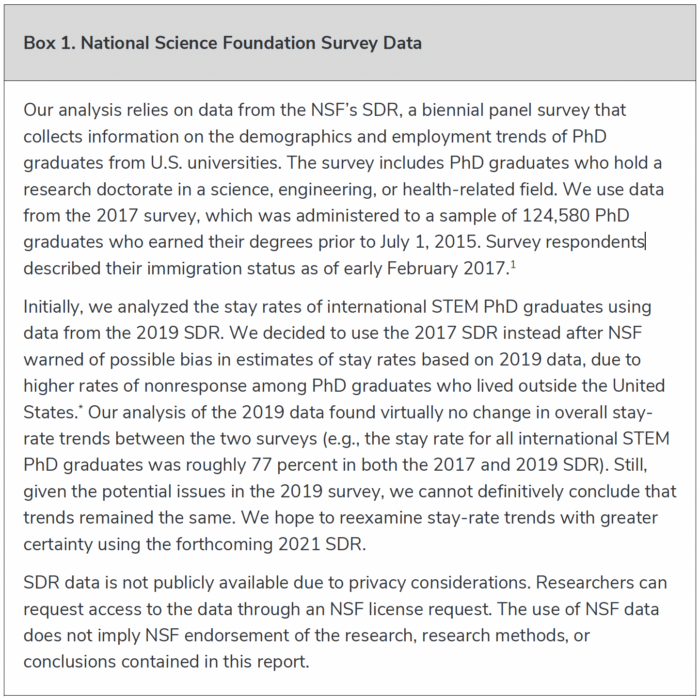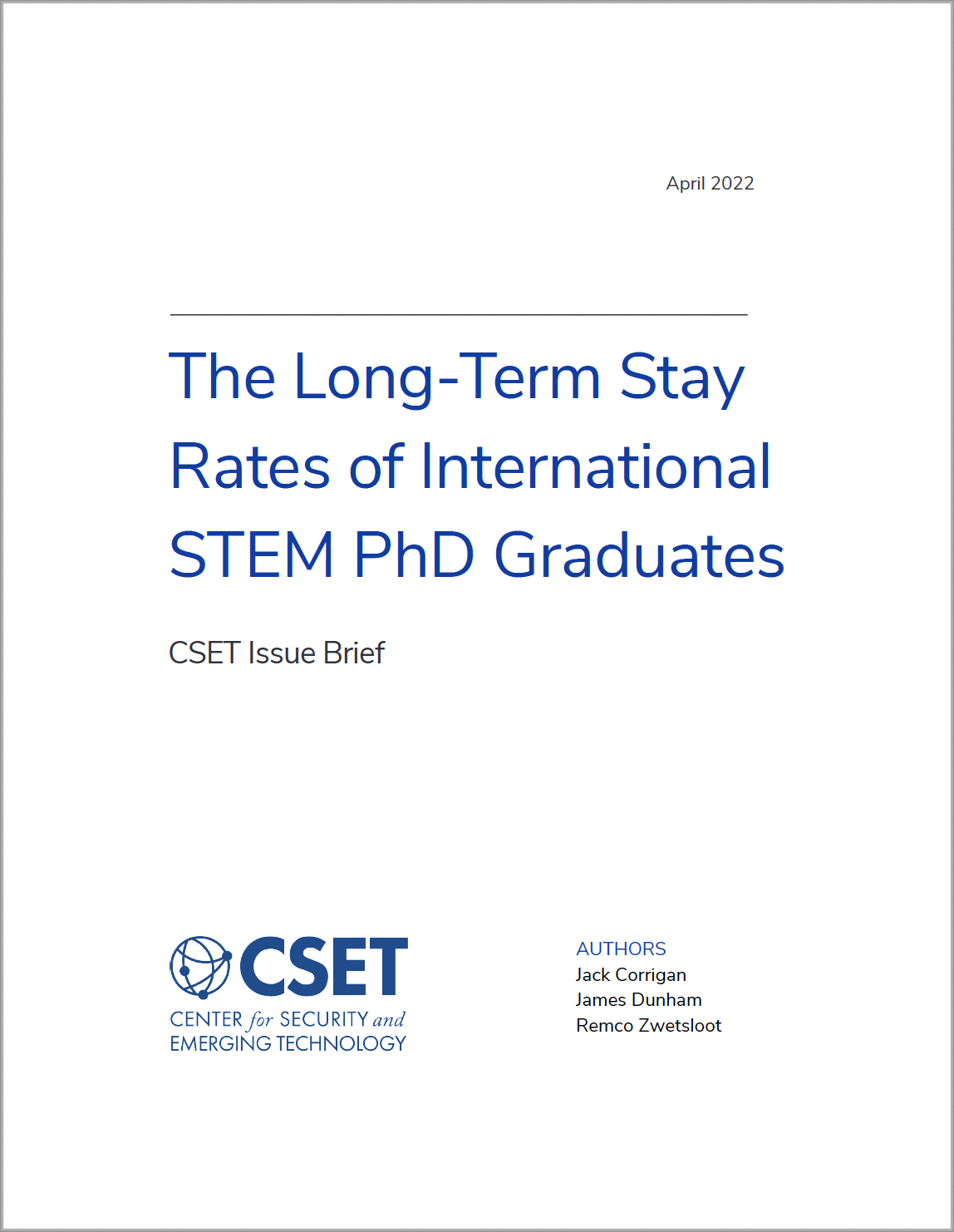Executive Summary
This issue brief examines how many international STEM PhD graduates choose to stay in the United States after earning their degrees and explores how those graduates navigate the U.S. immigration system. Our analysis is based on data collected through the National Science Foundation’s (NSF) Survey of Doctorate Recipients (SDR), a survey that collects information on the demographics and employment trends of PhD graduates from U.S. universities (see Box 1 for details).
We found that a large majority of foreign nationals who earn STEM PhDs in the United States remain in the country many years after graduating. Specifically, we found that:
- Long-term stay rates are high. As of February 2017, roughly 77 percent of the more than 178,000 international STEM PhD graduates from U.S. universities between 2000 and 2015 were still living in the country.
- Stay rates remain high even among older graduates. Since 2000, at least 65 percent of every year’s graduating class has stayed in the United States, and since 2004, no graduating class has had a stay rate below 73 percent.
- Stay rates are similar across STEM fields. Though stay rates for different fields vary across individual years, no one STEM discipline has consistently higher or lower stay rates than the others.
- Chinese and Indian nationals account for nearly half of all international STEM PhD graduates in the United States, and most stay long after graduation. In February 2017, approximately 90 percent of Chinese nationals and 87 percent of Indian nationals who completed STEM PhD programs in the United States between 2000 and 2015 were still living in the country, compared to 66 percent of graduates from other countries. Due to country caps on green cards, Indian graduates have more difficulty obtaining permanent residency than other international students.
- International STEM PhD graduates follow a similar path through the U.S. immigration system. The plurality of graduates who completed their degrees between 2004 and 2011 had obtained permanent residency by February 2017, and among those who graduated before 2004, nearly half had become naturalized U.S. citizens.

